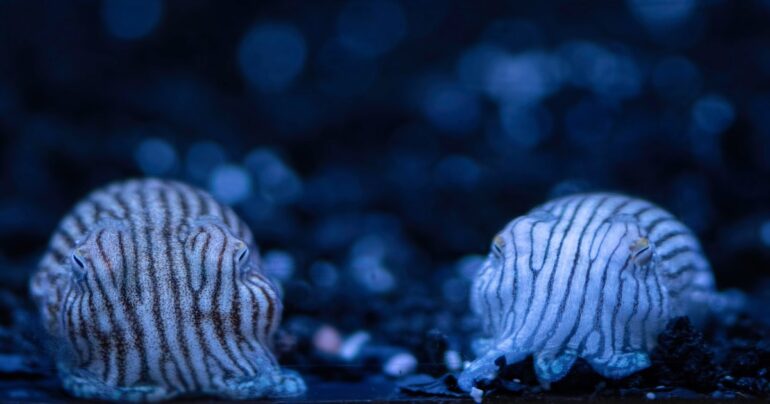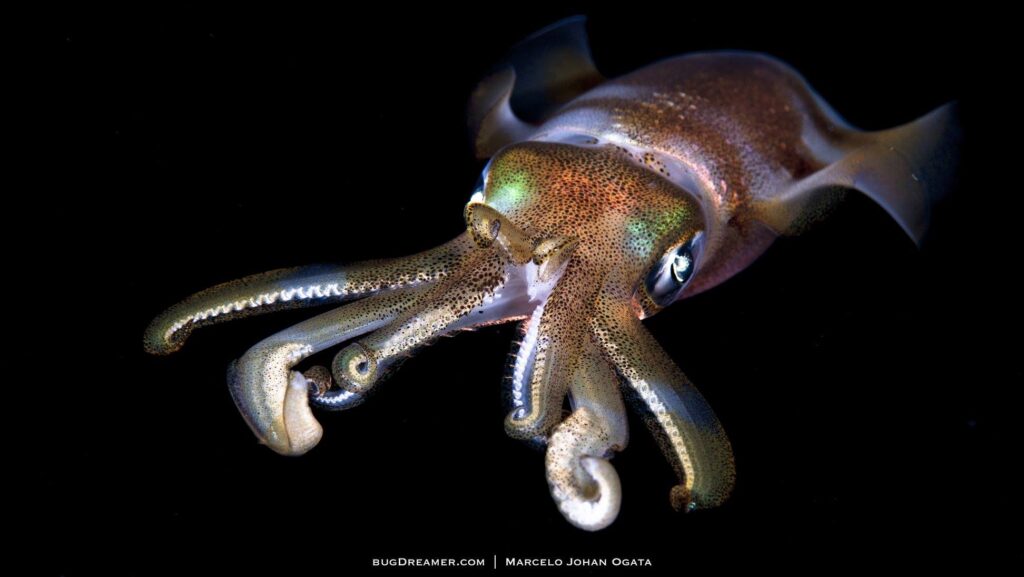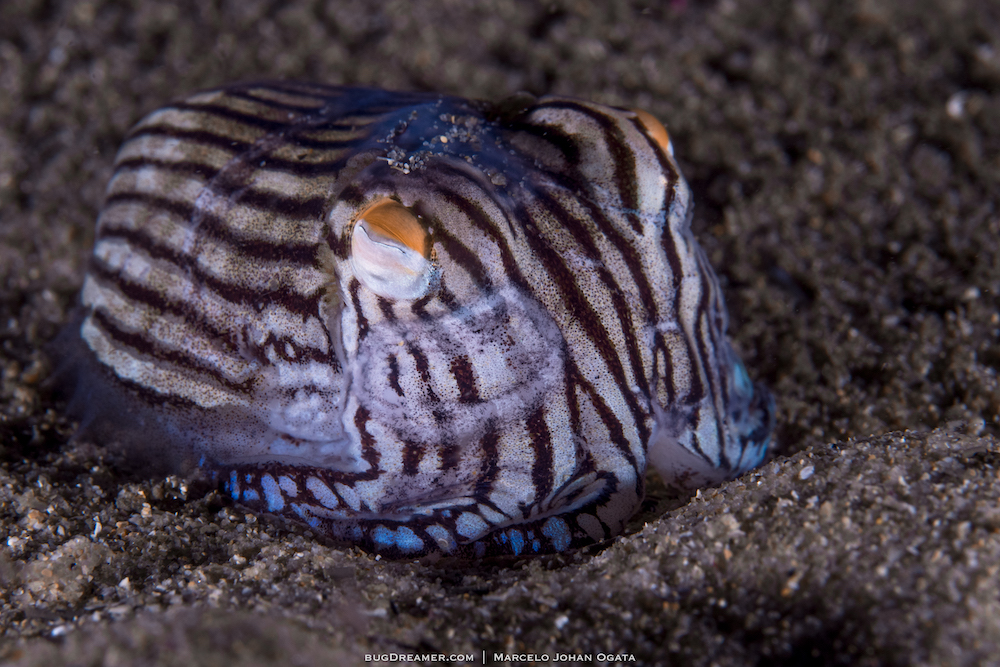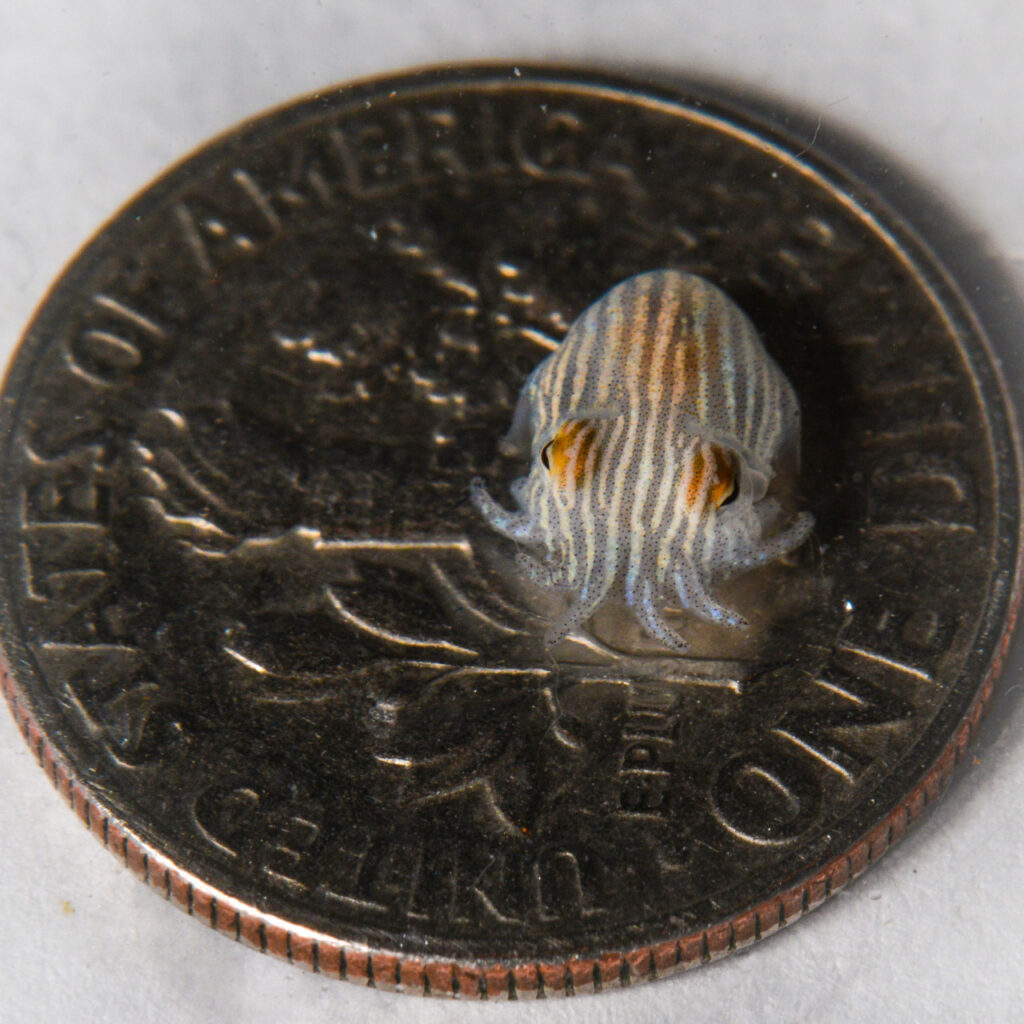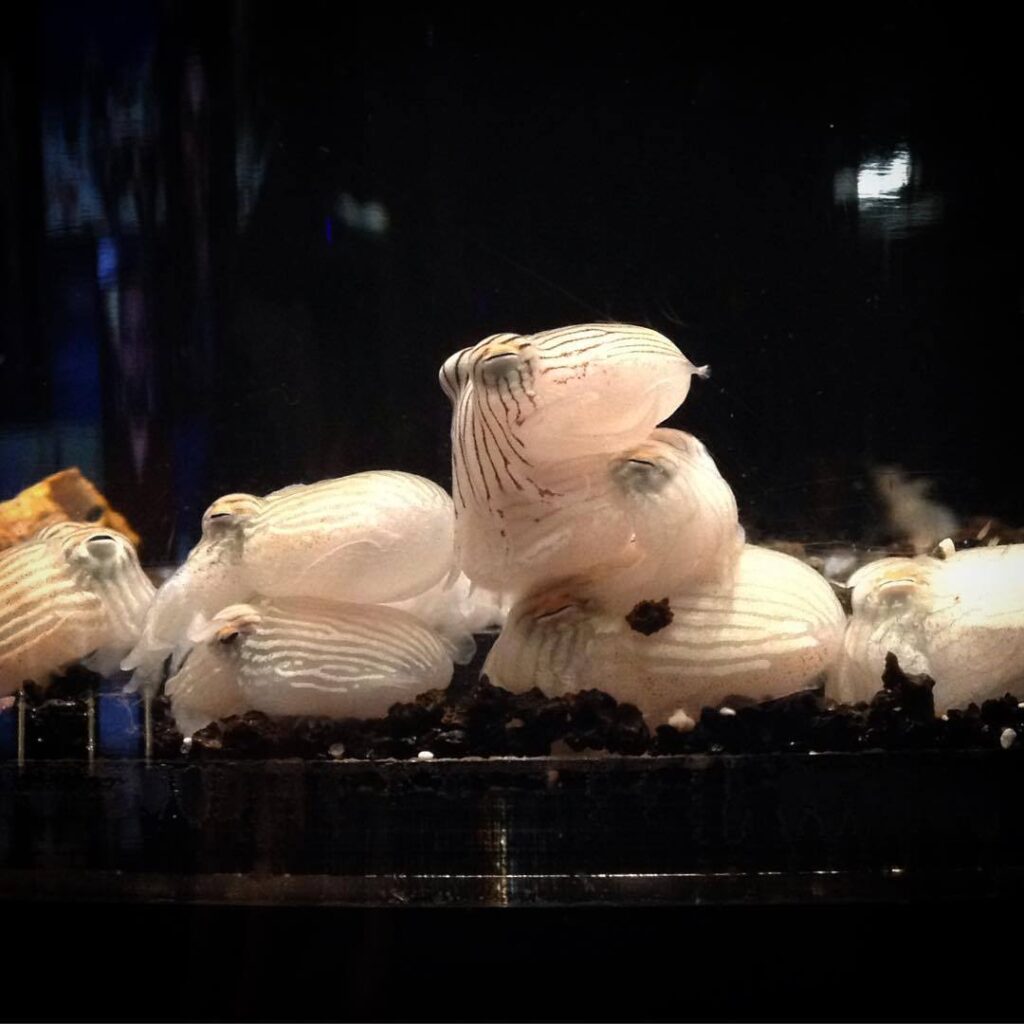Striped pyjama squids (Sepioloidea lineolata) are some of the cutest cephalopods, rarely seen in aquariums. Pyjama squids are part of the Sepiadariida family, which is a group related to squid and cuttlefish. So it seems despite their name, pyjama squids are not really squids at all!
So what’s the difference?
Pyjama squids have short stubby bodies and stay mostly hidden under the sand during the day. Squids, on the other hand, have slender sleek bodies and hunt for fast-moving prey in the water column.
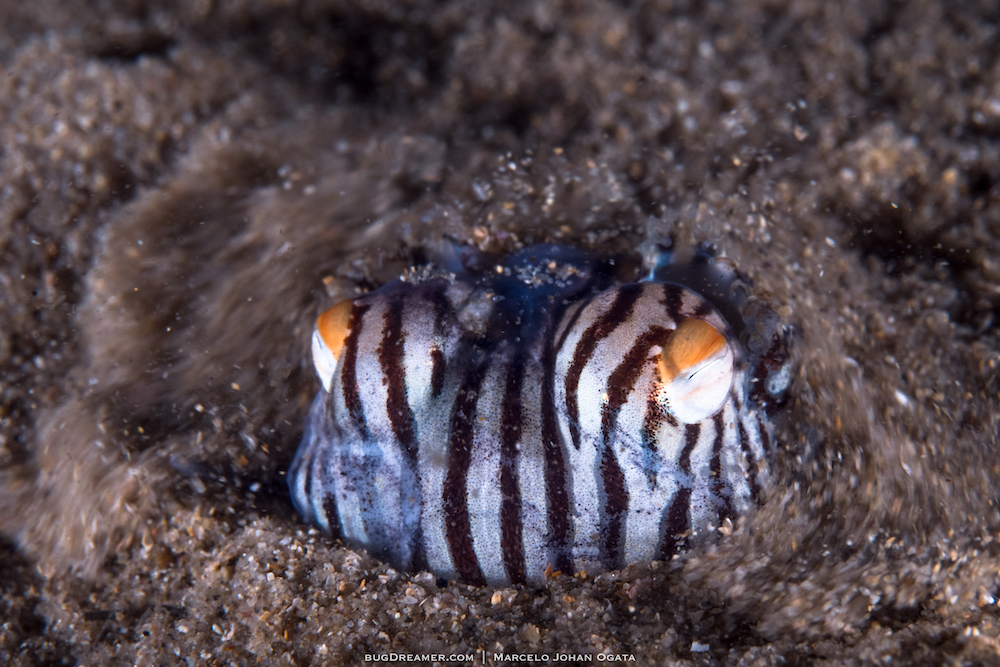
Pyjama squids are similar in body shape to cuttlefish, and both are stealthy ambush predators. At night, pyjama squids can be seen bobbing along the seafloor hunting for prey, while cuttlefish are masters at buoyancy, hovering motionlessly in the water.
Cuttlefish have a unique bone called the cuttlebone which is porous and made of aragonite. The cuttlebone has different gas-filled chambers important for buoyancy. Although similar in shape and color-changing abilities, the pyjama squids from the Sepiadariida family are lacking this porous buoyancy bone.
Pyjama squids are tiny creatures with adults reaching only 3in / 7cm in length. Pyjama squids have a short life expectancy anywhere from 8 months to 2 years. And until recently your best chance at spotting a pygmy squid was snorkeling or scuba diving off the coast of Australia in their natural habitat.
In 2016 the Monterey Bay Aquarium in California successfully reared pyjama squid from eggs to hatchlings and finally to adults able to lay viable eggs. They were the first to close the lifecycle and now these cute creatures are on display at public aquariums across the united states.
As we cannot visit public aquariums in person these days thankfully we found some websites and social media pages full of educational resources. The Monterey Bay Aquarium, Steinhart Aquarium, and Aquarium of the Pacific, are three great resources to learn more about cephalopods.
Cracking the code and rearing pyjama squids in captivity is one of the many achievements in captive breeding pioneered by public aquariums. Visit your favorite public aquarium website to see how you can support pubic aquariums during this time.


